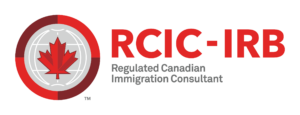Local SEO for Canadian Businesses: A Complete Guide

Local SEO for Canadian Businesses: A Comprehensive Guide
Are you a Canadian business owner looking to attract more customers nearby? Then you need to understand how to improve your local search presence. This comprehensive guide will walk you through the essential strategies to improve your visibility in local search results and drive more traffic to your business. In today’s digital landscape, optimizing for local search is crucial for any business aiming to thrive within its community. Let’s dive in!
Understanding Local SEO for Canadian Businesses
Local SEO focuses on optimizing your online presence to attract customers within a specific geographic area. Unlike traditional SEO, which targets a broader audience, local SEO hones in on searchers looking for businesses like yours in their immediate vicinity. For Canadian businesses, this means targeting customers in your city, province, or even neighborhood.
Why is this so important? Think about it: when someone searches for “best pizza near me” or “plumber in [Your City, Province],” they’re ready to make a purchase. If your business appears prominently in those search results, you’re far more likely to win their business. Studies show that a significant percentage of local searches result in a store visit or phone call.
Effective Strategies for Local Search Success
Here are some proven strategies to boost your local SEO efforts in Canada:
1. Claim and Optimize Your Google Business Profile (GBP)
Your Google Business Profile (formerly Google My Business) is the cornerstone of your local search strategy. Ensure your GBP is claimed, verified, and fully optimized. This includes:
- Accurate business name, address, and phone number (NAP)
- Compelling business description highlighting your unique selling points
- High-quality photos and videos of your business
- Selecting relevant business categories
- Regularly posting updates, offers, and events
- Responding promptly to customer reviews
A well-maintained GBP sends strong signals to Google that your business is legitimate and relevant to local searchers. For help optimizing your GBP, consider resources like Google’s official support documentation.
2. Strategic Local Keyword Usage
Conduct keyword research to identify the terms your target customers are using to find businesses like yours in your area. Incorporate these keywords naturally into your website content, GBP description, and online listings. Think beyond generic terms like “restaurant” and include specific local phrases like “Italian restaurant in [Your City, Province]” or “best coffee shop in [Your Neighbourhood, Your City].” Using tools like Ahrefs Keywords Explorer can aid in this process.
3. Building and Maintaining Local Citations
Citations are online mentions of your business name, address, and phone number (NAP) on other websites. Consistent and accurate citations across reputable directories like Yelp, Yellow Pages Canada, and industry-specific websites help Google verify your business’s legitimacy and improve your local ranking. Use a citation management tool such as BrightLocal to ensure consistency.
4. Managing and Encouraging Local Reviews
Online reviews are a critical ranking factor in local search. Encourage satisfied customers to leave reviews on your Google Business Profile, Yelp, and other relevant platforms. Actively respond to reviews, both positive and negative, to show that you value customer feedback. Positive reviews build trust and credibility, while addressing negative reviews demonstrates your commitment to customer service. Remember that ethical solicitation of reviews is key – don’t incentivize customers for reviews.
5. Website Optimization for Local Audiences
Your website is your digital storefront. Ensure it’s optimized for local search by:
- Including your NAP information prominently on every page
- Creating location-specific landing pages for each service area
- Using schema markup to provide structured data about your business to search engines. Schema.org provides detailed information about schema markup.
- Ensuring your website is mobile-friendly, as many local searches happen on mobile devices
- Optimizing your website’s loading speed for a better user experience
6. Creating Engaging Local Content
Create blog posts, articles, and videos that are relevant to your local audience. Write about local events, community initiatives, or topics of interest to residents in your area. This not only attracts local traffic to your website but also establishes you as a trusted resource in your community. For example check out this blog post on SEO tips for small businesses.
Tracking Your Local Search Performance
Track your progress using tools like Google Analytics and Google Search Console. Monitor key metrics such as:
- Website traffic from local searches
- Ranking for target keywords
- Number of calls and website visits from your Google Business Profile
- Customer reviews and ratings
By closely monitoring these metrics, you can identify areas for improvement and refine your strategy over time.
Final Thoughts on Local SEO
Improving your local search presence is an ongoing process that requires consistent effort and attention. By implementing the strategies outlined in this guide, Canadian businesses can significantly improve their visibility in local search results, attract more customers, and grow their business within their community. Embrace these tactics, adapt to the evolving search landscape, and watch your business thrive. Investing in improved local search presence is an investment in the future success of your Canadian business.

